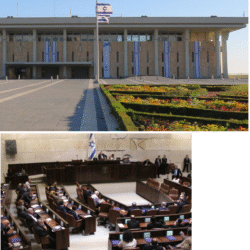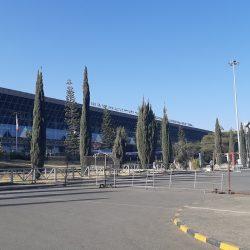A step-by-step guide on how to get to the Knesset in Jerusalem:
📍 Location:
The Knesset is located in Kiryat Ben-Gurion, Jerusalem.
Knesset Address:
Kiryat Ben-Gurion, Jerusalem, Israel
🚗 Arriving by Car:
✅ Parking Location:
HaLeom Parking Garage
📍 Address: 10 Yitzhak Rabin Blvd., Jerusalem
🚐 Free Shuttle Service:
- Park your car at HaLeom Garage
- Board the free shuttle that leaves for the Knesset entrance every few minutes
💡 Free Parking Conditions:
- Parking is free only if you validate your parking ticket after your Knesset tour
- Parking validation machines are located at the usher desks near the following entrances:
- Palombo entrance
- Entrance for Members of Knesset
- Weil entrance
- Kedma entrance
🔔 Important: If you forget to validate your ticket, you will need to pay the full parking fee at the garage.
🚌 Arriving by Public Transportation:
🟢 Egged Bus Lines:
- 7
- 7A
- 14
- 35
- 66
🟣 Superbus Lines:
- 90
- 97
These lines stop near the Knesset.
⏰ Arrival Time:
Visitors must arrive at least 30 minutes before the scheduled tour to allow time for security screening.
The Knesset
The Knesset is a central institution in Israel’s democratic system, embodying the principles of representative democracy and serving as the country’s primary legislative body. Here are some key aspects of its role and structure:
1. Legislative Authority
The Knesset is Israel’s sole legislative body, responsible for drafting, debating, and passing laws. Legislation can be proposed by individual MKs, parliamentary committees, or the government.
2. Oversight of the Executive Branch
The Knesset monitors the government (executive branch) through various mechanisms, including:
- Question times and debates – MKs can question ministers and the prime minister.
- Parliamentary inquiries and committees – These investigate government policies and actions.
- No-confidence motions – The Knesset can vote to dissolve the government.
3. Electoral Functions
- The Knesset elects the President of Israel (a largely ceremonial role).
- It also plays a role in forming governments, as the party or coalition with majority support selects the prime minister.
4. Representation & Proportional Elections
- Israel uses a proportional representation system, meaning voters choose parties rather than individual candidates.
- The electoral threshold (currently 3.25%) ensures that only parties with significant support enter the Knesset.
- This system promotes diversity, with Arab, ultra-Orthodox, secular, left-wing, and right-wing parties all represented.
5. Historical & Symbolic Significance
- The name “Knesset” comes from the Great Assembly (Knesset HaGedolah) of ancient Jewish tradition.
- The number of seats (120) mirrors the number of members in that historic body.
- Its location in Jerusalem underscores Israel’s claim to the city as its capital.
Challenges & Criticisms
- Political fragmentation – Proportional representation often leads to coalition governments, which can be unstable.
- Polarization – Deep ideological divides (e.g., secular vs. religious, left vs. right) sometimes hinder governance.
- Judicial and legislative tensions – The Knesset has debated reforms to limit judicial oversight, sparking major protests.
Despite these challenges, the Knesset remains a dynamic and vital institution in Israeli democracy, reflecting the nation’s diversity and democratic values.




